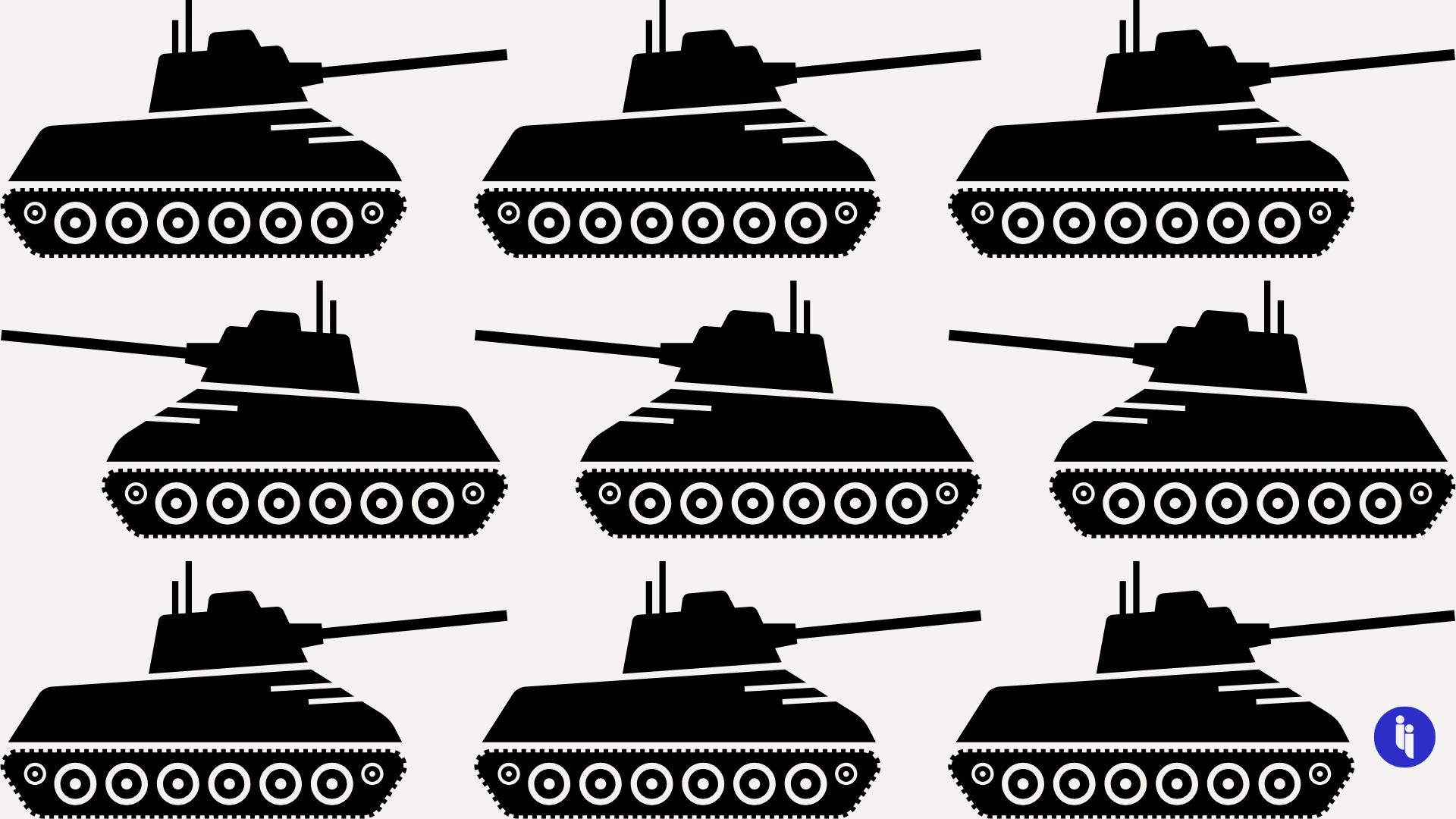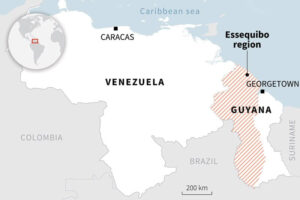The Stockholm International Peace Research Institute (SIPRI) was born back in the 1960s, after Sweden’s then prime minister (who we imagine rocked a turtleneck) suggested establishing a new thinktank to commemorate the country’s 150 years of unbroken peace.
And SIPRI has been absolutely pumping out reports ever since, but it’s really grabbed international attention in recent years, charting how a spooked world is now re-arming.
In fact, the latest SIPRI report suggests this trend might even be accelerating.
Stay on top of your world from inside your inbox.
Subscribe for free today and receive way much more insights.
Trusted by 123,000+ subscribers
No spam. No noise. Unsubscribe any time.
Here are six of the report’s most intriguing numbers:
- 37%
That’s how much we’ve ramped up global military spending over the past decade, now hitting a cool $2,718B. And a majority of that has occurred in the past four years, with 2024 recording the single biggest jump (~10%) since at least the end of the Cold War.
To be clear — this spending isn’t tracking economic growth. Rather, everyone’s dedicating more of their national pie to re-arming, which gets us to who’s doing all the spending…
- 60%
That’s how much of the world’s military spending now comes from just five countries: the US, China, Russia, Germany, and India (in that order). Drill down a little more?
The US alone accounts for 37%, ahead of China (~12%) and Russia (~5.5%).
But those numbers aren’t static…
- 30
That’s how many consecutive years China’s military spending has now been growing, the longest recorded streak for any country. Why? President Xi formalised two goals back at his Communist Party’s 19th National Congress in 2017 — he wanted:
- a fully modernised and intelligent military by 2035, and
- one capable of winning wars by 2050.
But he then quickly accelerated that 2035 modernisation target to 2027, aligning with the People’s Liberation Army’s 100th anniversary. And does 2027 ring a bell? It’s also the year when, according to folks like the former heads of INDOPACOM and CIA, Xi wants his military capable of taking Taiwan (btw, both clarified that capability doesn’t mean intent).
And speaking of shifting the goalposts…
- 18
That’s how many of NATO’s 32 members have now reached the alliance’s 2% spending pledge in 2024. Sure, that’s up from 11 a year earlier, but NATO capitals are now grappling with President Trump’s new 5% target: the early-adopters include Poland, Lithuania, and Estonia, all bordering (and formerly occupied by) Russia.
Fun fact (heavily contingent on your definition of fun): can you guess which single European country hasn’t increased its military spending over the last year? Tiny Malta.
And can you guess which country ramped up its spending the most, globally?
- $202 million
The answer is Guyana! Its $202M defence budget above is a rounding error for any major player, but still up a massive 78% from the year before. And to remember why, just look at who’s next door: Venezuela’s dictator Nicolas Maduro continues to claim two thirds of Guyana-controlled turf.
And… even we were a little surprised to see which country dropped its spending by…
- 20%
Saudi Arabia! That 20% drop is over the past decade rather than the past year, but it’s still big, particularly for a top spender like the Saudis. Why?
They’ve wound down their military intervention against the Iran-backed Houthis in neighbouring Yemen, and their oil-infused budget surpluses have dried up, but the kingdom is still the region’s biggest military spender and the world’s seventh largest.
Intrigue’s Take
One way to look at all this is like a balancing act of balancing acts: while there’s a shared sense of insecurity driving defence spending up just about everywhere, that’s coming at a time when most governments are already struggling to balance their books.
So there’s this balance between boosting security without either a) undermining your own debt sustainability, or b) undermining other national strengths and even your own approval ratings when you have to finance this stuff via spending cuts elsewhere.
There’s also this balance between governments wanting immediate results through importing arms off the shelf, versus trying to boost your own longer-term capabilities at home, which can take many, many years.
And then there’s the overall pace at which you move on all of the above: walk too slow, and it might not be enough to reverse years of underinvestment; run too fast, and you might spook the neighbours into making a big miscalculation.








